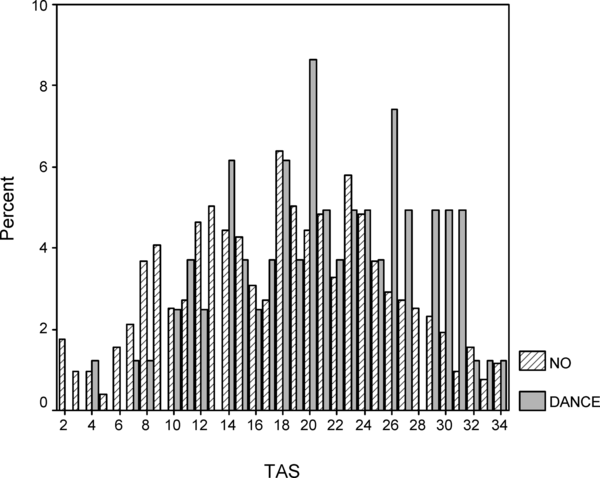What makes dancers different than the rest of us? Genetic variants, says a researcher at the Hebrew University of Jerusalem.
In a study published in PLoS Genetics, Prof. Richard P. Ebstein of the Department of Psychology and his research associates have shown, through DNA examination, that dancers show consistent differences in two key genes from the general population. Ebstein is the head of the Scheinfeld Center for Human Genetics in the Social Sciences in the Department of Psychology.
This finding is not surprising, says Ebstein, in view of other studies of musicians and athletes, which also have shown genetic differences.
Ebstein and his colleagues found in an examination of 85 dancers and advanced dancing students in Israel variants of two genes that provide the code for the serotonin transporter and arginine vasopressin receptor 1a.
Both genes are involved in the transmission of information between nerve cells. The serotonin transporter regulates the level of serotonin, a brain transmitter that contributes to spiritual experience, among many other behavioral traits. The vasopressin receptor has been shown in many animal studies to modulate social communication and affiliative bonding behaviors. Both are elements involved in the age-old human social expression of dancing.
The genetic evidence was corroborated by two questionnaires distributed by the researchers to the dancers. One is the Tellegen Absorption Scale (TAS), that correlates aspects of spirituality and altered states of consciousness, and the other is the Tridimensional Personality Questionnaire (TPQ), a measure of the need for social contact and openness to communication.

Distribution of Tellegen Absorption Scale (TAS) in Female Dancers and Nondancers/Nonathletes. doi:10.1371/journal.pgen.0010042.g001
The genetic and questionnaire results of the dancers were compared with those of two other groups examined – athletes as well as those who were both non-dancers and non-athletes. (Athletes were chosen for comparison since they require a good deal of physical stamina like dancers.)
When the results were combined and analyzed, it was clearly shown that the dancers exhibited particular genetic and personality characteristics that were not found in the other two groups.
The dancer “type,” says Ebstein, clearly demonstrates qualities that are not necessarily lacking but are not expressed as strongly in other people: a heightened sense of communication, often of a symbolic and ceremonial nature, and a strong spiritual personality trait.
Others involved in the research with Ebstein were his Ph.D. student Rachel Bachner-Melman, as well as additional researchers from Israel and France.
Citation: Citation: Bachner-Melman R, Dina C, Zohar AH, Constantini N, Lerer E, et al. (2005) AVPR1a and SLC6A4 Gene Polymorphisms Are Associated with Creative Dance Performance. PLoS Genet 1(3): e42. doi:10.1371/journal.pgen.0010042





Comments